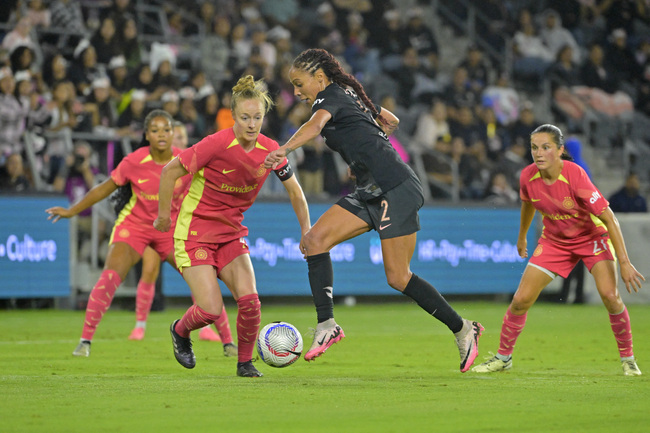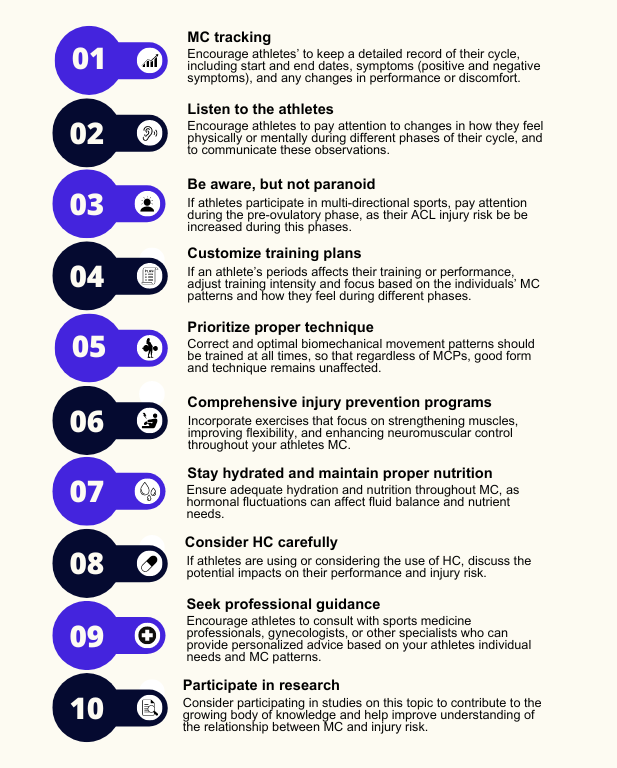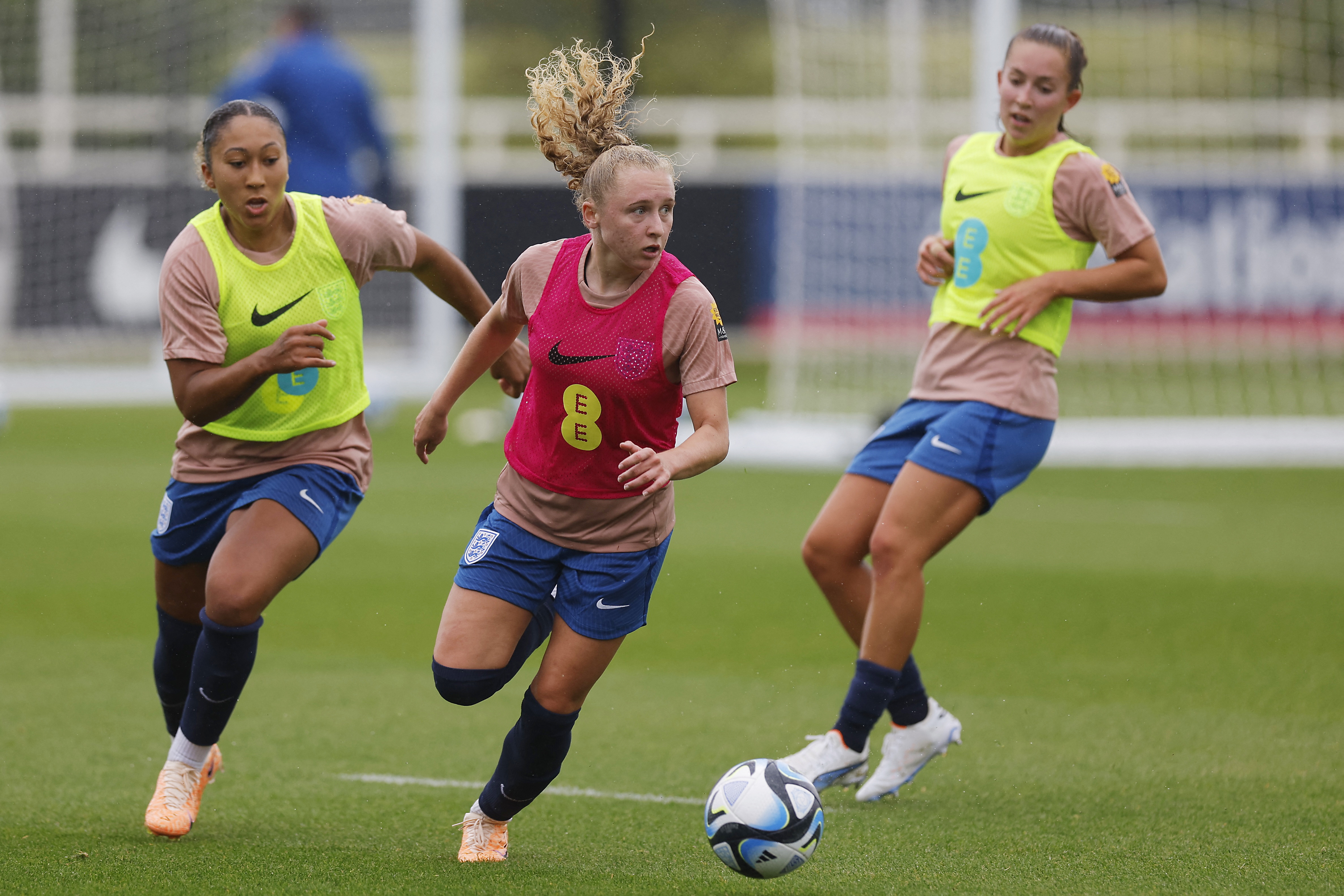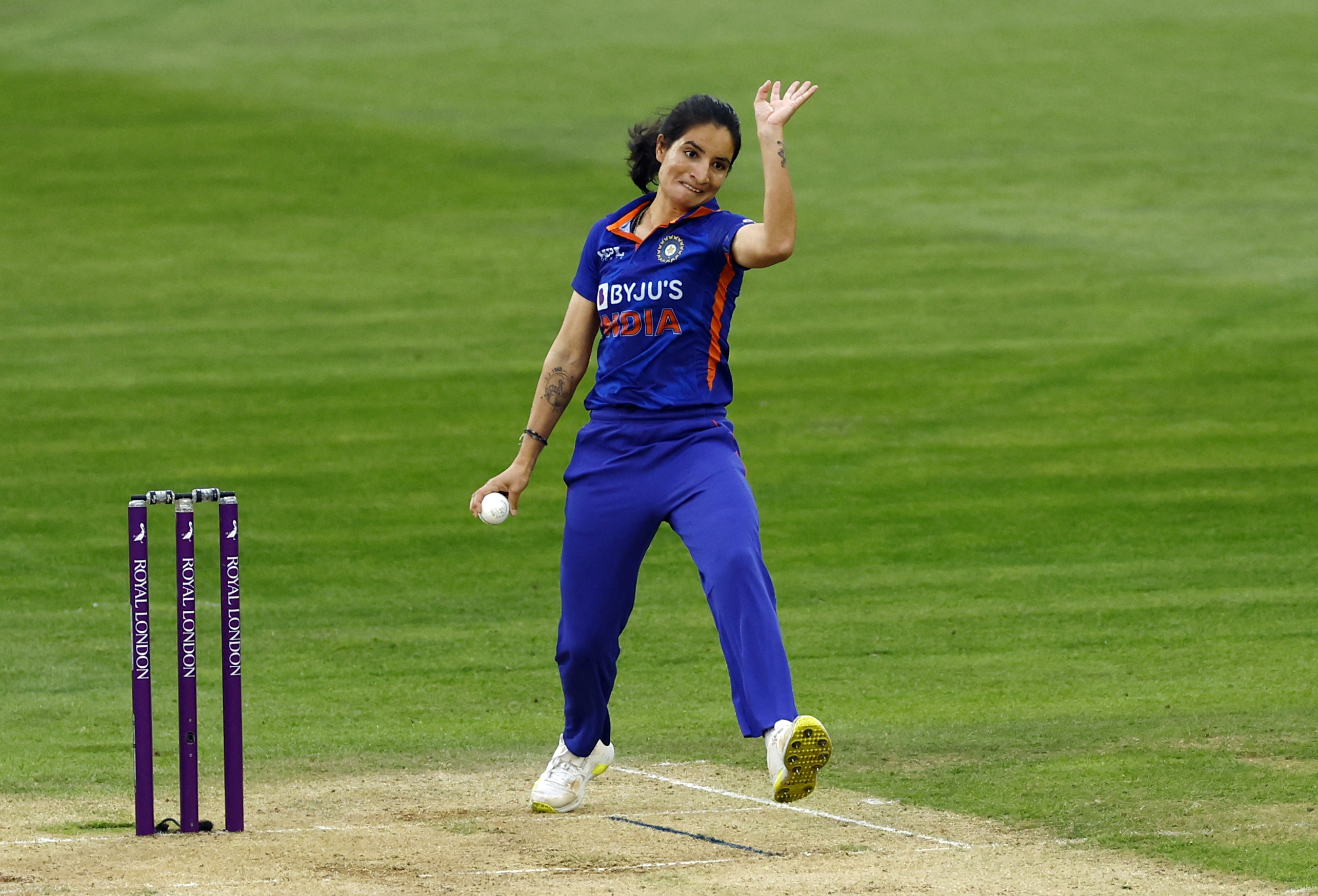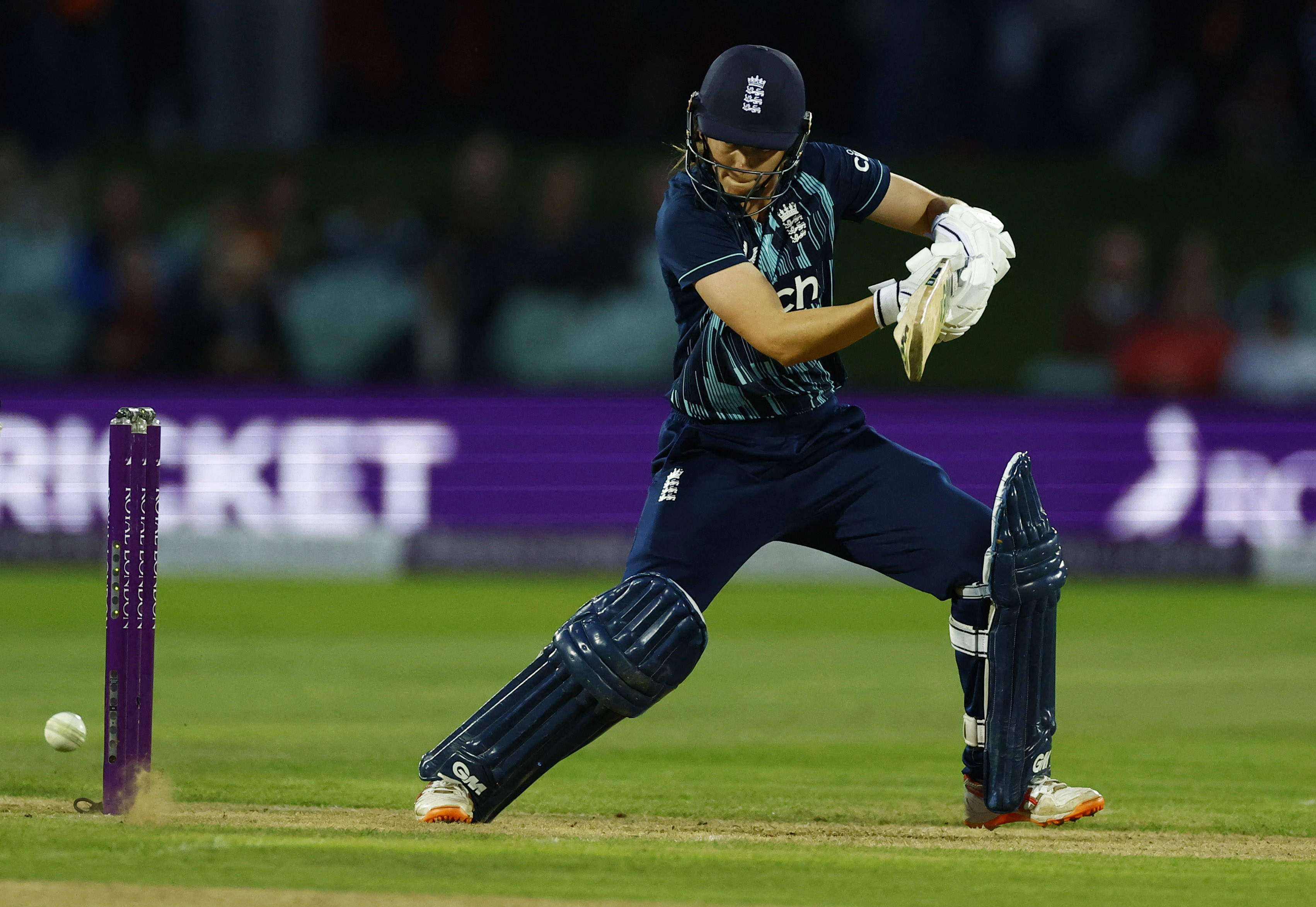You are viewing 1 of your 1 free articles
Solving the Mystery: Menstrual Cycles, Contraceptives, and Injury
Understanding the relationship between menstrual cycles, hormonal contraceptive use, and musculoskeletal injury risk is crucial for healthcare providers and conditioning practitioners who work with female athletes. Candice MacMillan highlights the latest key research findings to underscore the importance of recognizing these influences on injury prevention and athlete care.
Angel City FC forward Sydney Leroux controls the ball against Portland Thorns FC defender Becky Sauerbrunn during the second half at BMO Stadium. Mandatory Credit: Jayne Kamin-Oncea-Imagn Images
The intricate relationship between menstrual cycles (MC), hormonal contraceptives (HC), and musculoskeletal (MSK) injuries in female athletes remains a complex and understudied area of sports medicine. While research has made significant strides in understanding various aspects of women’s health in sports, the interplay between these three factors continues to puzzle scientists and practitioners alike. They recognize menstrual cycle health as a crucial component of athletes’ overall well-being, influencing not only reproductive health but also performance and injury risk. Despite the scarcity of comprehensive, good-quality research in some areas, emerging evidence suggests that hormonal fluctuations during the MC and the use of HC may have profound effects on MSK health and injury susceptibility.
Menstrual cycles and MSK injuries
The association between MC phases and MSK injury risk among athletes is a complex and evolving area of research(1). Current evidence suggests that hormonal fluctuations during the MC may influence injury susceptibility, particularly for certain types of injuries(1,2). Injury risk increases during the pre-ovulatory and ovulatory phases of the MC(2,3). This phase is characterized by rising estrogen levels, which may affect ligament laxity and neuromuscular control. However, the relationship is not consistently observed across all studies, indicating that other factors may also play a role.
Research has also explored the potential impact of the MC on muscle strength, joint laxity, and overall injury risk(4). Hormonal changes throughout the cycle may influence these factors, potentially altering an athlete’s biomechanics and increasing injury risk during certain phases. It is important to note that individual variations in MC length, hormonal profiles, and responses to hormonal fluctuations make it challenging to establish definitive conclusions. Additionally, using HC among athletes further complicates the relationship between MC phases and injury risk. There is a potential association between menstrual cycle phases and MSK injury risk. However, more research is needed to fully understand this relationship and its implications for injury prevention strategies in female athletes. Coaches, medical professionals, and athletes should consider individual MC patterns and symptoms when developing training and injury prevention programs.
“Coaches, medical professionals, and athletes should consider individual MC patterns...”
Menstrual Irregularity and MSK Injuries
Menstrual irregularities (MI), including oligomenorrhea, polymenorrhea, amenorrhea, anovulatory cycles, or luteal-phase deficiencies, are prevalent among athletes in diverse sports and correlate with increased injury risk. High school athletes with MI endure more severe injuries and prolonged recovery periods compared to their counterparts with regular cycles(5). The Female Athlete Triad (FAT), more recently renamed as Relative Energy Deficiency in Sport (RED-S), is a condition arising from inadequate energy intake relative to expenditure, impairing physiological functions such as metabolic rate, menstrual function, bone health, immune system, and cardiovascular health(6). Female athletes with RED-S are particularly susceptible to bone stress injuries (BSIs), such as stress fractures, due to the imbalance between bone microdamage and the body’s ability to repair it through bone remodeling. This increased injury risk is further compounded by the fact that RED-S can affect multiple body systems.
Hormonal Contraceptives and Injury Risk
Hormones introduced from external sources, such as HC, suppress the body’s natural hormone production, eliminating the typical hormonal variations during a normal MC. Given the impact of the menstrual hormonal patterns on injury susceptibility, HCs might offer protection against injuries. However, combined HCs do not protect against MSK injuries in the general population(7). For female athletes, the use of oral contraceptive pills, either in conjunction with or without neuromuscular training, may enhance the knee joint’s dynamic stability and reduce the risk of ACL injuries(8). Further research is needed to fully elucidate the complex relationship between HC, especially HC methods other than oral contraceptives, and MSK injury risk in female athletes across different sports and competitive levels.
Practical Implications
The relationship between MC, HC, and MSK injuries in female athletes has garnered increasing attention recently. However, there are still several gaps in the literature, including research from countries other than North America and Europe among non-professional/elite-level athletes in team sports. Although hormonal fluctuations might influence injury risk, it’s crucial to recognize that this is only one piece of a much larger puzzle.
Focusing exclusively on hormonal factors can lead to a narrow understanding of injury prevention. Female athletes face a multitude of risk factors, including training loads, biomechanics, nutrition, psychological stress, and overall health. By fixating solely on hormonal changes, athletes, coaches, and medical personnel may overlook other critical evidence-based strategies for reducing injury risk and enhancing performance. Injury prevention programs that address strength training, flexibility, and sport-specific conditioning are fundamental for all athletes, regardless of their menstrual cycle status.
Moreover, emphasizing overall wellness—including adequate rest, nutrition, and mental health—can contribute to injury prevention. A holistic approach recognizes the interplay between various factors, including athletes’ MC characteristics, fostering resilience, and optimizing performance.
While understanding the potential impact of hormonal fluctuations is essential, it should not overshadow the broader context of athletic health. By adopting a well-rounded strategy integrating various evidence-based practices, athletes and their support teams can create a more effective framework for injury prevention and performance enhancement (see figure 1).
References
1. Sports Med. Published online on August 31, 2024.
2. Int J Environ Res Public Health. 2023;20(4):3264.
3. Am J Sports Med. 2002;30(2):182-188.
4. DPLoS One. 2023;18(1).
5. TJ Athl Train. 2012;47(1):74-82.
6. Br J Sports Med. 2023;57(17):1073-1098.
7. Br J Sports Med. 2023;57(18):1195-1202.
8. Orthop J Sports Med. 2017;5(7):232596711771878.
Newsletter Sign Up
Subscriber Testimonials
Dr. Alexandra Fandetti-Robin, Back & Body Chiropractic
Elspeth Cowell MSCh DpodM SRCh HCPC reg
William Hunter, Nuffield Health
Newsletter Sign Up
Coaches Testimonials
Dr. Alexandra Fandetti-Robin, Back & Body Chiropractic
Elspeth Cowell MSCh DpodM SRCh HCPC reg
William Hunter, Nuffield Health
Be at the leading edge of sports injury management
Our international team of qualified experts (see above) spend hours poring over scores of technical journals and medical papers that even the most interested professionals don't have time to read.
For 17 years, we've helped hard-working physiotherapists and sports professionals like you, overwhelmed by the vast amount of new research, bring science to their treatment. Sports Injury Bulletin is the ideal resource for practitioners too busy to cull through all the monthly journals to find meaningful and applicable studies.
*includes 3 coaching manuals
Get Inspired
All the latest techniques and approaches
Sports Injury Bulletin brings together a worldwide panel of experts – including physiotherapists, doctors, researchers and sports scientists. Together we deliver everything you need to help your clients avoid – or recover as quickly as possible from – injuries.
We strip away the scientific jargon and deliver you easy-to-follow training exercises, nutrition tips, psychological strategies and recovery programmes and exercises in plain English.
